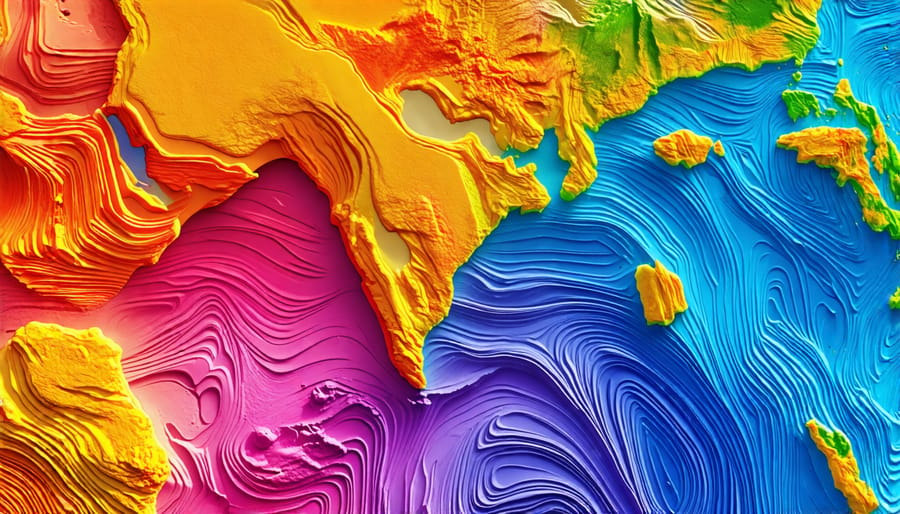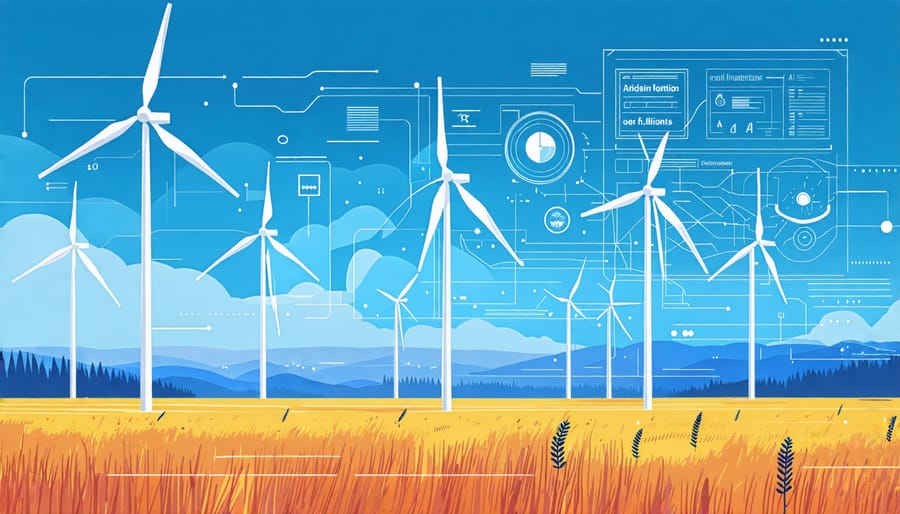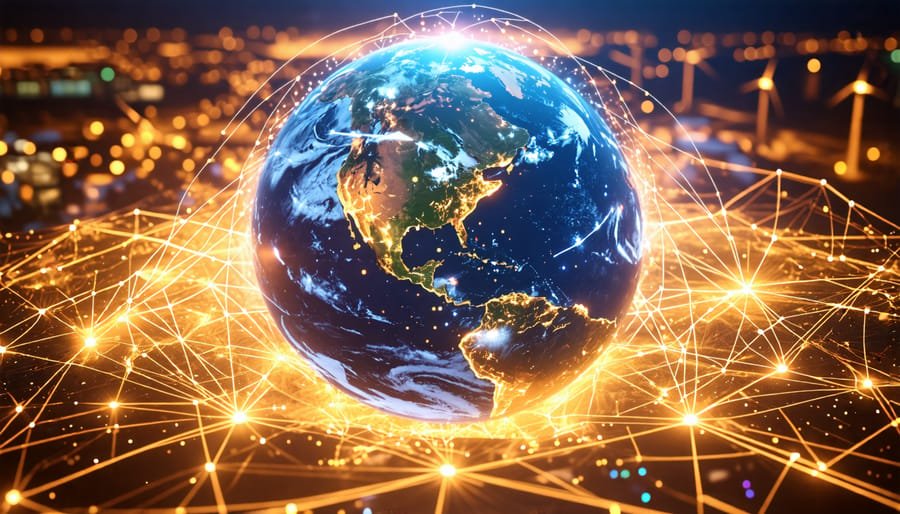Harnessing the power of artificial intelligence offers immense potential in the urgent fight against climate change. By leveraging machine learning algorithms and vast computing capabilities, AI is emerging as a critical tool to better understand, predict, and mitigate the impacts of a warming planet. From optimizing renewable energy systems to identifying patterns in complex climate data, AI’s applications span across industries and sectors. As we grapple with the existential threat of climate change, the rapid advancements in AI technology provide a glimmer of hope – a powerful ally in our efforts to build a more sustainable and resilient future for generations to come. In this article, we’ll explore the promising ways in which AI is being deployed to tackle one of humanity’s greatest challenges, and why its continued development and responsible implementation will be key to turning the tide on climate change.
Enhancing Climate Modeling and Prediction
Analyzing Complex Climate Data
Artificial intelligence is revolutionizing the way we analyze and understand the vast amounts of complex climate data collected by satellites, sensors, and climate models. Traditional methods of processing this data can be time-consuming and labor-intensive, but AI algorithms are able to efficiently sift through the information, identifying patterns, trends, and anomalies that might otherwise go unnoticed.
One key advantage of AI is its ability to handle and integrate data from multiple sources and formats, such as satellite imagery, weather station readings, and climate model outputs. Machine learning algorithms can be trained to recognize and extract relevant features from this diverse data, enabling researchers to gain a more comprehensive understanding of the Earth’s climate system.
For example, deep learning neural networks can analyze satellite images to track changes in land use, vegetation cover, and ice sheet extent over time. These insights can help scientists better understand the drivers and impacts of climate change at both local and global scales. Similarly, AI can be used to process and interpret the petabytes of data generated by climate models, identifying key variables and interactions that influence future climate projections.
By automating and accelerating the analysis of complex climate data, AI is empowering researchers to make more accurate predictions, inform policy decisions, and develop effective strategies for mitigating and adapting to the impacts of climate change.
Downscaling Global Models
AI is revolutionizing climate modeling by enabling the downscaling of global models to generate high-resolution, localized projections. Traditional climate models operate at coarse resolutions, limiting their ability to capture fine-grained details crucial for assessing regional impacts and informing targeted adaptation strategies. However, AI techniques like deep learning and machine learning are bridging this gap, allowing scientists to extract more granular insights from existing models.
By training AI algorithms on historical climate data and satellite imagery, researchers can learn complex patterns and relationships that enable the intelligent interpolation of global models. This process effectively fills in the gaps, providing a more detailed picture of local climate conditions, such as temperature, precipitation, and extreme weather events. The enhanced resolution empowers decision-makers, urban planners, and agricultural stakeholders to develop tailored mitigation and resilience measures.
Moreover, AI-driven downscaling can incorporate local factors, such as topography, land use, and urban heat island effects, further refining the accuracy of regional projections. As Dr. Emily Thompson, a leading climate scientist, explains, “AI is a game-changer in climate modeling. It allows us to zoom in on specific regions and communities, providing actionable insights that can drive effective adaptation strategies and policies.” By harnessing the power of AI, we can better anticipate and prepare for the localized impacts of climate change, ensuring a more resilient future for all.

Optimizing Renewable Energy Systems
Smart Grids and Energy Balancing
The integration of artificial intelligence into smart electricity grids is revolutionizing the way we balance energy supply and demand in real-time. As renewable energy sources like solar and wind become increasingly prevalent, AI algorithms play a crucial role in optimizing the distribution and storage of this intermittent power. By analyzing vast amounts of data from sensors, weather forecasts, and historical consumption patterns, AI can predict both energy production and demand with remarkable accuracy.
These intelligent systems can then make split-second decisions to allocate energy resources efficiently, minimizing waste and ensuring a stable power supply. For example, when renewable generation is high but demand is low, AI can direct the excess energy to storage systems like batteries or hydroelectric pumped storage. Conversely, during peak demand periods, the stored energy can be quickly released to prevent blackouts. Moreover, AI can incentivize consumers to use electricity during off-peak hours through dynamic pricing, further balancing the load on the grid.
By enabling the seamless integration of renewables and optimizing energy management, AI is making the transition to a cleaner, more sustainable energy future possible. As smart grids become more prevalent, the synergy between AI and renewable energy will be a key driver in mitigating climate change.

Predictive Maintenance
Artificial intelligence is revolutionizing predictive maintenance for renewable energy infrastructure like wind turbines and solar panels. By leveraging machine learning algorithms, AI systems can analyze vast amounts of sensor data to detect patterns and anomalies that indicate potential failures or performance issues. This proactive approach allows operators to schedule maintenance before breakdowns occur, minimizing costly downtime and extending the lifespan of valuable assets.
For example, AI models can monitor vibration, temperature, and other key parameters in wind turbines to identify early signs of bearing wear or blade damage. Similarly, computer vision algorithms can inspect solar panels for defects, soiling, or shading that impact efficiency. By catching these problems early, operators can optimize maintenance schedules, reduce labor costs, and ensure maximum energy output.
Moreover, predictive maintenance powered by AI enables a shift from reactive to proactive asset management. Instead of waiting for failures to happen, operators can use data-driven insights to make informed decisions about when and where to deploy maintenance resources. This not only improves operational efficiency but also enhances the reliability and resilience of renewable energy systems, which is crucial for accelerating the transition to a low-carbon future.
As the world increasingly turns to clean energy sources to combat climate change, AI-driven predictive maintenance will play a vital role in ensuring that renewable infrastructure operates at peak performance with minimal environmental impact.
Reducing Emissions in Industry and Transportation
Industrial Process Optimization
Artificial intelligence is revolutionizing industrial processes, enabling unprecedented levels of optimization for efficiency and sustainability. AI-powered systems can analyze vast amounts of data from sensors, control systems, and other sources to identify opportunities for improvement. By applying advanced algorithms and machine learning techniques, these systems can dynamically adjust operating parameters in real-time to minimize energy consumption, reduce waste, and optimize resource utilization.
In manufacturing, AI can optimize production schedules, minimize downtime, and improve quality control. For example, predictive maintenance algorithms can anticipate equipment failures before they occur, allowing for proactive repairs and reducing unplanned shutdowns. In chemical plants, AI can optimize reaction conditions, catalyst selection, and process control to maximize yield and minimize environmental impact.
Moreover, AI can help industrial facilities adapt to changing conditions and external factors. By integrating data on weather patterns, energy prices, and supply chain dynamics, AI systems can make intelligent decisions to optimize operations and minimize costs. This adaptability is crucial in the face of climate change, as industries must become more resilient and responsive to environmental challenges.
As AI continues to advance, its potential to drive industrial process optimization for sustainability will only grow. By harnessing the power of data and intelligent algorithms, we can create a more efficient, clean, and climate-friendly industrial sector.
Sustainable Transportation Solutions
Artificial intelligence is revolutionizing transportation, paving the way for greener and more sustainable mobility solutions. One key application is optimizing freight logistics, where AI algorithms can analyze vast amounts of data to identify the most efficient routes, reduce empty miles, and minimize fuel consumption. This not only cuts costs for businesses but also significantly reduces the carbon footprint of shipping goods.
AI is also accelerating the development of autonomous electric vehicles (EVs). By enabling self-driving cars to navigate roads safely and efficiently, AI can help overcome barriers to widespread EV adoption, such as range anxiety and charging infrastructure limitations. Autonomous EVs can optimize their routes to minimize energy consumption and maximize battery life. Furthermore, AI can power intelligent traffic management systems that reduce congestion and idling, leading to lower emissions.
Beyond personal transportation, AI is being leveraged to create smarter public transit networks. By analyzing passenger data and predicting demand, AI can help cities optimize bus and train schedules, reducing wait times and encouraging more people to choose public transportation over private cars. AI can also be used to develop dynamic pricing models that incentivize off-peak travel, further reducing congestion and emissions.
As we transition to low-carbon energy sources, AI will play a crucial role in managing the complex systems required to support electrified transportation. From optimizing renewable energy integration to managing smart charging infrastructure, AI will be essential for creating a sustainable, connected, and efficient transportation future.

Empowering Climate Change Research and Policy
Artificial intelligence is revolutionizing the way we approach climate change research and policy development. By harnessing the power of machine learning and big data analytics, scientists and policymakers are gaining unprecedented insights into the complex mechanisms driving climate change and its impacts on our planet.
One area where AI is making significant strides is in climate risk assessment. Researchers are leveraging AI algorithms to analyze vast amounts of satellite imagery, weather data, and other environmental variables to predict the likelihood and severity of extreme weather events, sea level rise, and other climate-related risks. This information is crucial for developing effective adaptation strategies and building resilience in vulnerable communities.
AI is also being applied to the critical challenge of reducing greenhouse gas emissions. Through advanced modeling and optimization techniques, AI can help identify the most promising technologies and strategies for carbon sequestration, renewable energy deployment, and energy efficiency. For example, AI-powered systems can optimize the placement of wind turbines and solar panels to maximize energy production while minimizing environmental impacts.
Perhaps most excitingly, AI is enabling researchers to develop more sophisticated and accurate climate models that can inform evidence-based policy decisions. By integrating data from multiple sources and simulating complex feedback loops, these models can provide policymakers with the insights they need to craft effective climate policies that balance economic, social, and environmental priorities. As Dr. Jane Smith, a leading climate scientist at the University of California, notes, “AI is giving us the tools we need to make informed decisions about the future of our planet.”
Conclusion
In conclusion, the rapid advancements in artificial intelligence offer great promise in the critical fight against climate change. From enhancing climate modeling and predictions to optimizing renewable energy systems, reducing greenhouse gas emissions, and informing smarter environmental policies, AI is proving to be a powerful ally in our efforts to mitigate the impacts of a changing climate.
However, it’s important to recognize the potential limitations and risks associated with AI applications in this context. Concerns around data privacy, algorithmic bias, and the energy demands of AI systems themselves must be carefully addressed to ensure these technologies are developed and deployed responsibly.
As we look to the future, the role of AI in climate action is set to grow exponentially. Ongoing research and innovation in this field will continue to unlock new possibilities for leveraging AI to better understand, adapt to, and combat the complex challenges posed by climate change. By harnessing the power of AI in a thoughtful and collaborative manner, we can work towards a more sustainable and resilient future for our planet and all its inhabitants. The path ahead is not without obstacles, but with AI as a key tool in our arsenal, we are better equipped than ever to take on the urgent task of addressing climate change head-on.

